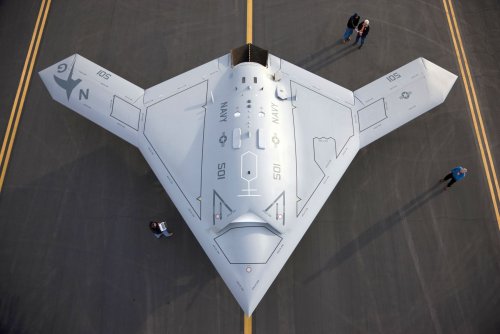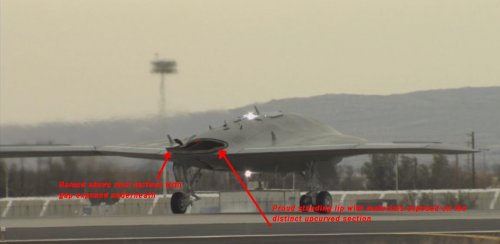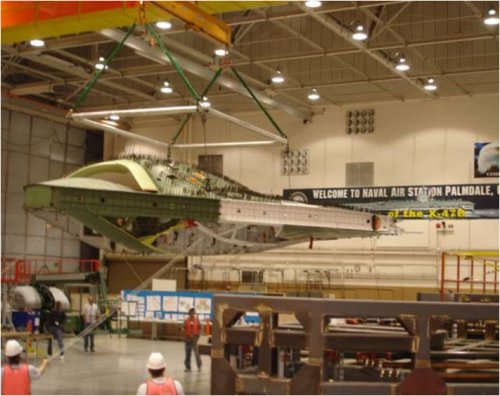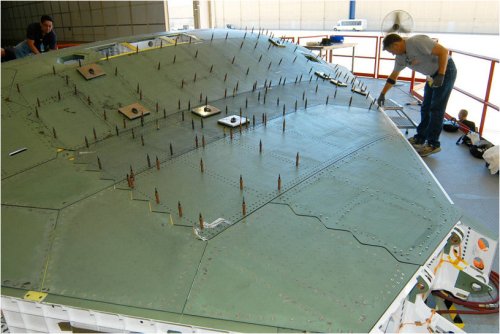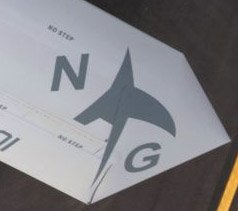UCAS-D to Taxi Early Next Month
Nov 24, 2010
By Amy Butler, Guy Norris
Palmdale, Calif., Palmdale, Calif.
Northrop Grumman plans to perform the first high-speed taxi of its X-47B unmanned combat air system (UCAS-D) demonstrator by the first week of December as a prelude to first flight by year-end at Edwards AFB, Calif.
The taxi test will take the stealthy, single-engine UCAS to 120 kt., according to company officials.
Northrop Grumman and U.S. Navy officials passed the tailless, flying wing demonstrator for taxi tests at a flight readiness review early this month and are set to build up X-47B ground speeds over a series of trials that were due to begin at Edwards Nov. 19. These evaluations mark the culmination of almost two years of preparations since the rollout of the first air vehicle, AV-1, in December 2008.
Delayed by engine-related acoustic and starting issues as well as software complexity, the Navy’s first dedicated stealth aircraft since the canceled General Dynamics/McDonnell Douglas A-12 was originally due to fly in November 2009. Following corrective actions and a rebalancing of the program toward carrier landings in 2013 rather than late 2011 as originally planned, Northrop Grumman UCAS-D Vice President Janis Pamiljans believes the bulk of the preparations are complete. Pending successful low-, medium- and high-speed taxi tests, Pamiljans says first-flight timing will likely be dependent only on good weather.
“First flight is just an event, even though it’s an aviation first,” says Pamiljans, stressing that the key priority remains landing on an aircraft carrier and proving that the UCAS-D can operate on and around it. This is a key confidence-building step in gaining widespread Navy support to buy a fleet of UCAS-type systems that can ultimately perform the stealthy strike mission intended for the A-12, but with the increased range and endurance of an unmanned aircraft.
In the run-up to taxi tests, Pamiljans says, “software is done; it’s wrapped, stamped and is in the aircraft.” The U4.3 vehicle management software used in earlier tests has been replaced with an improved U4.4 load for first flight.
The planned 22-min. first flight will be conducted at 4,000 ft. with the gear down, and the vehicle flying a racetrack pattern over the dry lakebed with standard-rate turns. The landing will be made back on the same runway used for takeoff, says Pamiljans, adding that the “key will be to get as much air vehicle management system data as we can.” The sortie will mark the start of a roughly 50-flight, year-long Block 1 envelope expansion test campaign at Edwards. Initial flight rate is expected to be once per week, rising to twice a week later in 2011.
Later next year, AV-1 will be transferred to the Navy’s test center at NAS Patuxent River, Md., and eventually hoisted onboard an aircraft carrier, says Pamiljans. The UCAS will then be maneuvered around the vessel as part of the program’s Block 2 carrier deck operations and handling trials test plan.
Assembly of the second X-47B, AV-2, is virtually complete, with initial powering up of the vehicle’s systems achieved for the first time early this month. In December, the aircraft will be transferred to a loads test rig for up to eight weeks of structural proof tests that will simulate carrier landing and critical flight loads, as well as check the structure for catapult and arrestment loads, fuel system integrity and control surface freedom under load.
As AV-2 is designed to test the increased dynamic environment of air-to-air refueling, the vehicle must meet Navy requirements for 2.4g maneuvers, against 2.1g for AV-1. Although Northrop Grumman designed both airframes with margin for 3g, the rig will test AV-2 to 130% of design limit load, well beyond the 115% load tested on AV-1. “So we will take it well beyond what the vehicle will see in flight tests,” Pamiljans explains. “The build of the aircraft hasn’t been a challenge at all; it has been the software build” that proved more thorny, says Todd Snedigar, Northrop Grumman’s UCAS production manager.
AV-2 incorporates nozzle structure design improvements to accommodate changes to deal with the acoustic issues from the X-47B’s single Pratt & Whitney F100-220U engine that contributed to delays to AV-1. Completion was also made easier by development of a spray-application process for a fire-suppression coating in the engine bay. On the first vehicle, the coating was applied by hand.
AV-2 will be transferred to Edwards in March for initial taxi tests and engine runs using the U4.4 software. Following electromagnetic susceptibility trials at the base’s antenna farm, AV-2 will begin full taxi tests, with first flight expected by the end of next year. For this milestone, the second X-47B will be loaded with U5.0 software, scheduled to be certificated in December 2011 after flight trials using a Boeing F/A-18 as a UCAS surrogate. This software, now being developed with a build-up approach initially involving test flights of a Learjet in flight simulator operated by Calspan Research behind an Omega Air Refueling Boeing 707 tanker, will be further refined using the F/A-18.
Incorporating guidance, navigation and communications protocols to interface with the carrier, as well as air-to-air refueling and full envelope control, the U5.0 software will guide the F/A-18 to the first carrier touchdowns in February and March 2013. When four completely autonomous traps have been accomplished, the similarly configured AV-1, by now also equipped with U5.0, will be cleared for its first carrier landing attempt.
Meanwhile, Northrop Grumman has submitted a proposal to the Navy to outline a flight-test plan for the so-called Block 6 portion of the program. It will include aerial refueling trials using AV-2, equipped with both Navy and Air Force refueling receptacles. These would take place in 2014 after carrier operations are complete. Pamiljans says that flight-test effort could include 40 sorties, but the company is hoping to keep the number down to reduce cost. During load-testing, AV-2 will be subjected to forces simulating those experienced during refueling operations.

![X-47b_ucas_b-roll.wmv_snapshot_01.19_[2010.04.30_00.20.28].jpg](/data/attachments/40/40113-4e97940705a832ce2765f701a2886219.jpg)
![X-47b_ucas_b-roll.wmv_snapshot_01.19_[2010.04.30_00.20.46].jpg](/data/attachments/40/40114-862b53b5968dca31ca1c4bedb5ea6bc9.jpg)
![X-47b_ucas_b-roll.wmv_snapshot_01.24_[2010.04.30_00.21.04].jpg](/data/attachments/40/40115-a863a92d6d6b9b3fac889da69da37dbc.jpg)

